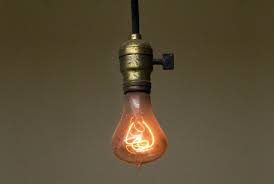


Light bulbs are an ubiquitous part of life that we give little thought to unless they go out, or we are perusing the latest aisle stack of bulbs on sale at Home Depot. So what’s the future of light in our homes and businesses? We may end up full circle, or using light bulbs at all may become obsolete.
As you probably realize, the incandescent bulb, the light bulb as we knew it for decades, has been forced out of existence by the Federal government imposing energy standards on it that it could not meet. By 2020 there will be no manufacturing of incandescent unless there is some drastic innovation in their design.
CFL bulbs were the first substitute to rush into the market. These ugly, mercury filled, slow warm up, beauties far surpassed the efficiency of incandescent but at a higher price. If you want some scary reading just check out the instructions for cleanup and disposal of a broken CFL bulb. You may just want to call a hazmat team to deal with it.
Now LED bulbs are making CFLs see the end of the road, as evidenced by GE’s decision to phase out production of CFLs in favor of LED. LEDs produce light at lower energy usage than CFL’s by a factor of almost 10, last 10 times longer than CFLs, and previously cost more than 10 times what a CFL cost, but those costs are dropping rapidly. Now that LED’s have dropped in price to 4 to 8X what CFL’s cost (and getting cheaper) the choice is a no brainer.
Ok that solves it right, LEDS are it? Not so fast. Researchers at MIT think they have solved the problem of energy waste in incandescent bulbs. Without getting too complicated it seems that the MIT brainiacs have found a way for the light energy to escape an incandescent bulb while the heat energy gets reflected back into the bulb to be released again as light making for a super-efficient bulb.
Beyond all this is the notion of no light bulbs at all. New technology that allows for the diffusion of light across surfaces without bulbs, think Kindle paper white, is in the works. Lasers, which are the basis of this new technology, are already being planned for use in BMW headlights. This laser light may be revolutionary. Imagine small fiber optics carrying light all around a home, or business, to be amplified in various places, or across various surfaces, without concern for sockets.
The future of light should be interesting. Of course they could just study the Livermore light bulb in California that has been burning for more than 100 years without interruption (you can watch it burn here). The Livermore light bulb is the centerpiece of a great documentary on planned obsolescence called The Light Bulb Conspiracy. If you have an hour I highly recommend it.